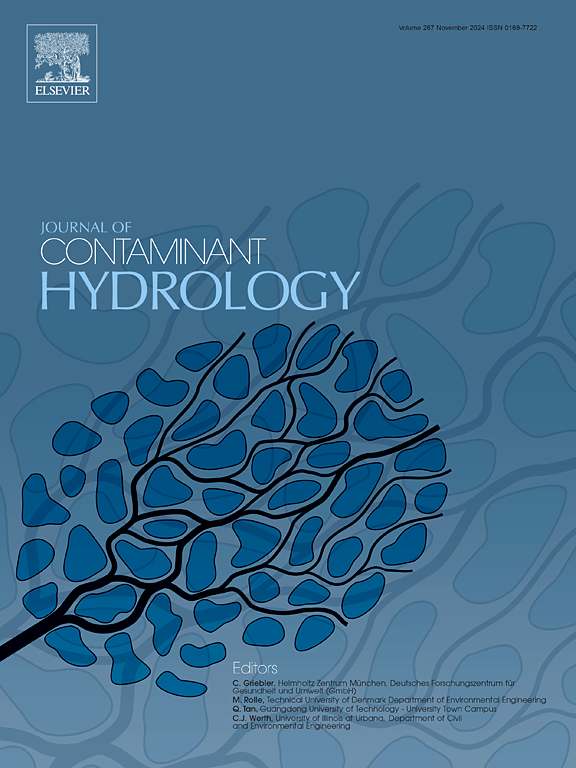全球南方水系统中的微塑料污染:综述。
IF 4.4
3区 环境科学与生态学
Q2 ENVIRONMENTAL SCIENCES
引用次数: 0
摘要
微塑料污染已成为一个重大的全球环境威胁,在全球南方水资源危机的背景下面临着特别的挑战。MPs的持久性和生物蓄积性导致它们对人类健康产生有害影响。目前处理、回收或减轻MPs的技术仍然不足,导致这些污染物的消除不足。此外,管理不善的塑料废物的破碎和降解被确定为MPs的重要来源。制定政治措施和可持续战略对于促进无mp环境至关重要。尽管数十年的广泛研究揭示了与塑料相关的广泛污染和潜在风险,但全球南方的政府机构在有效解决塑料和塑料污染方面取得的进展有限。本文批判性地回顾了最近在科学和监管方面的进展,强调迫切需要对MP污染进行全面研究,特别是在全球南方国家。全球南方的区域研究强调了解决严重环境污染问题的紧迫性,并强调有必要针对这些区域的具体挑战制定有针对性的缓解战略。这篇综述文章最后建议采取积极主动的途径,克服现有的障碍,推进可持续和有弹性地应对多聚污染物的努力,特别是在易受危机影响的水系统中。本文章由计算机程序翻译,如有差异,请以英文原文为准。
Microplastic pollution in water Systems of the Global South: A review
Microplastic (MP) pollution has emerged as a significant global environmental threat, with particular challenges in the context of water crises in the Global South. The persistent nature and bioaccumulation of MPs contribute to their detrimental impacts on human health. Current technologies for addressing, recycling, or mitigating MPs remain inadequate, resulting in insufficient elimination of these pollutants. Furthermore, the fragmentation and degradation of poorly managed plastic waste are identified as a substantial source of MPs. Establishing political measures and sustainable strategies is critical to promoting an MP-free environment. Despite decades of extensive research revealing the widespread pollution and potential risks associated with MPs, governmental agencies in the Global South have made limited progress in efficiently addressing plastic and MP pollution. This article critically reviews recent advancements in both scientific and regulatory perspectives, emphasizing the urgent need for comprehensive research on MP pollution, particularly in Global South nations. Regional studies in the Global South underscore the critical urgency of addressing significant environmental contamination and highlight the necessity for targeted mitigation strategies tailored to the specific challenges of these regions. The review article concludes by recommending a proactive path forward to overcome existing barriers and advance efforts toward a sustainable and resilient response to MP pollution, especially in water systems vulnerable to crises.
求助全文
通过发布文献求助,成功后即可免费获取论文全文。
去求助
来源期刊

Journal of contaminant hydrology
环境科学-地球科学综合
CiteScore
6.80
自引率
2.80%
发文量
129
审稿时长
68 days
期刊介绍:
The Journal of Contaminant Hydrology is an international journal publishing scientific articles pertaining to the contamination of subsurface water resources. Emphasis is placed on investigations of the physical, chemical, and biological processes influencing the behavior and fate of organic and inorganic contaminants in the unsaturated (vadose) and saturated (groundwater) zones, as well as at groundwater-surface water interfaces. The ecological impacts of contaminants transported both from and to aquifers are of interest. Articles on contamination of surface water only, without a link to groundwater, are out of the scope. Broad latitude is allowed in identifying contaminants of interest, and include legacy and emerging pollutants, nutrients, nanoparticles, pathogenic microorganisms (e.g., bacteria, viruses, protozoa), microplastics, and various constituents associated with energy production (e.g., methane, carbon dioxide, hydrogen sulfide).
The journal''s scope embraces a wide range of topics including: experimental investigations of contaminant sorption, diffusion, transformation, volatilization and transport in the surface and subsurface; characterization of soil and aquifer properties only as they influence contaminant behavior; development and testing of mathematical models of contaminant behaviour; innovative techniques for restoration of contaminated sites; development of new tools or techniques for monitoring the extent of soil and groundwater contamination; transformation of contaminants in the hyporheic zone; effects of contaminants traversing the hyporheic zone on surface water and groundwater ecosystems; subsurface carbon sequestration and/or turnover; and migration of fluids associated with energy production into groundwater.
 求助内容:
求助内容: 应助结果提醒方式:
应助结果提醒方式:


